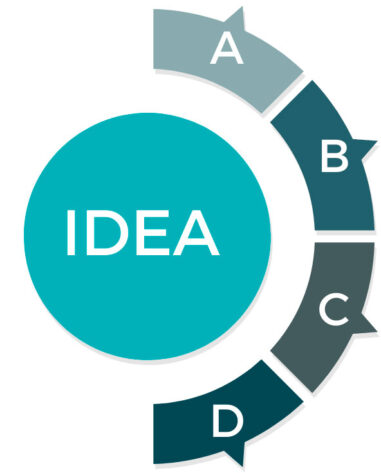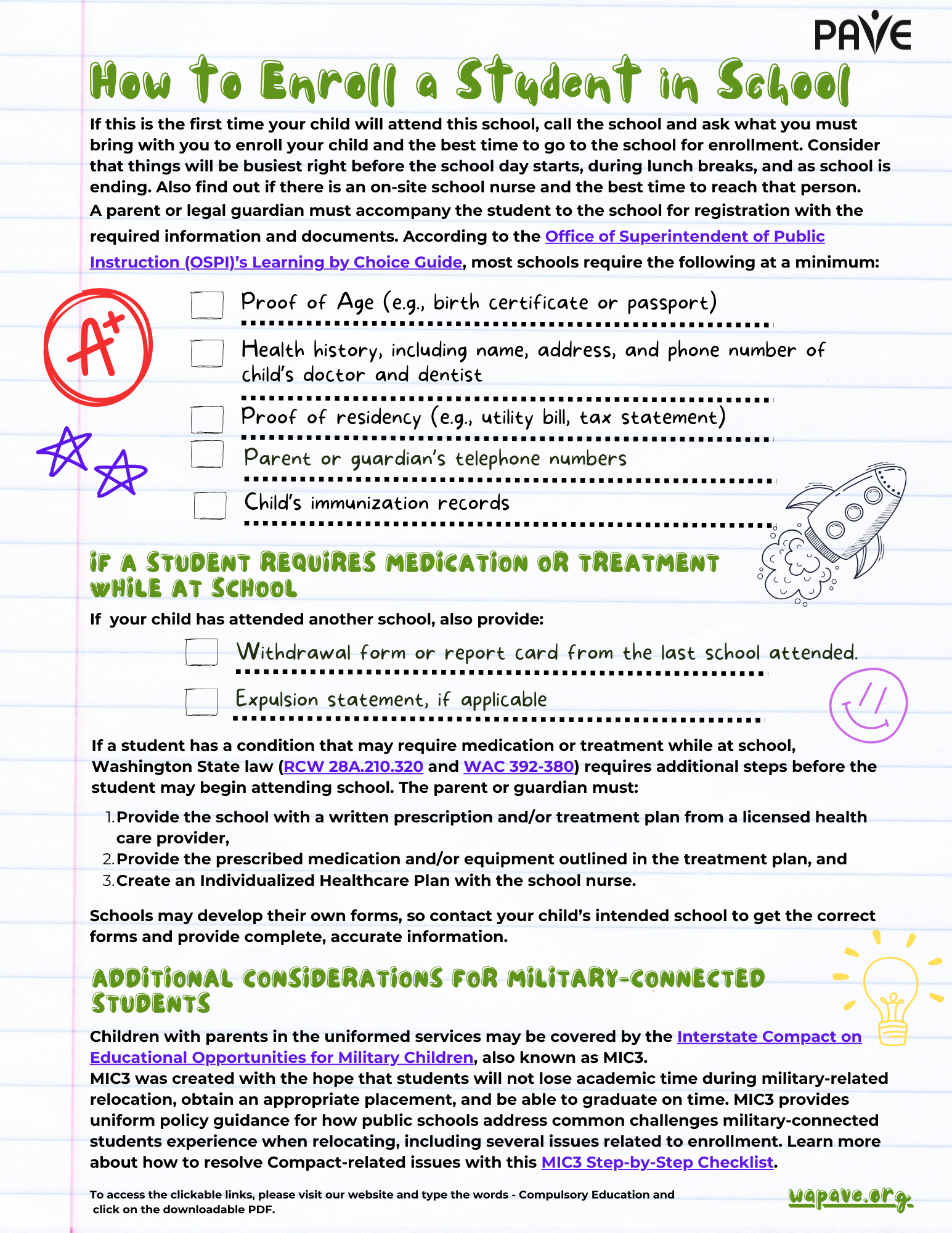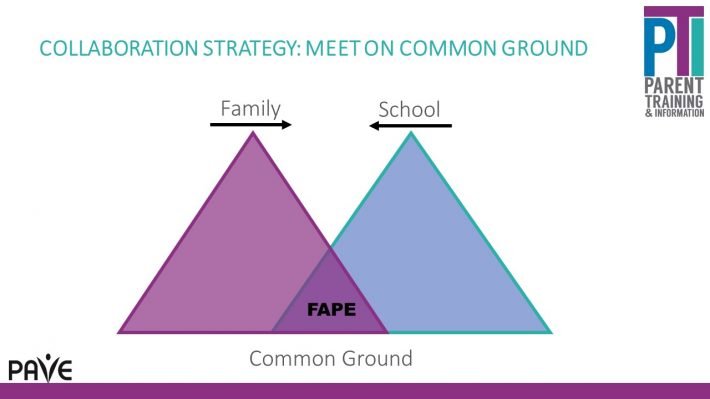Families can formally request a Functional Behavioral Assessment (FBA) when a student’s behavior interferes with learning. This process helps schools identify the root causes of behavioral challenges and develop a Behavior Intervention Plan (BIP) to support the student’s success.
A Brief Overview
- When a student’s behavior disrupts learning, schools are responsible for identifying the cause and implementing positive interventions.
- A Functional Behavioral Assessment (FBA) gathers data to inform a Behavior Intervention Plan (BIP), which outlines strategies to support the student.
- If a student with disabilities is disciplined, a Manifestation Determination meeting may be required to assess whether the behavior is linked to their disability. If so, the school must adjust services and may need to initiate or revise a BIP.
- Families have the right to request an FBA at any time and should do so in writing to ensure clarity and documentation. They may include input from outside providers, and schools must respond with written rationale.
- Requesting behavioral support does not mean removing a student from general education. Special education services must be provided in the Least Restrictive Environment (LRE) whenever possible.
- Families can use the downloadable Sample Letter to Request an FBA—available in multiple languages—to formally initiate the FBA process. The letter may be sent via email, regular mail, or delivered in person. Families should keep copies of all correspondence for their records.
Introduction
When a student’s behavior gets in the way of their learning and/or the learning of others, the school is responsible to figure out how to support behavioral expectations. One way to do that is to assess why the student might be acting out and use that information to consider how positive behavioral interventions might teach the student what to do instead.
A Functional Behavioral Assessment (FBA) is one way schools gather information to understand why a student may be struggling with behavior. The data collected through an FBA helps the team develop a Behavior Intervention Plan (BIP), which outlines strategies and supports tailored to the student’s needs. Families can request an FBA in writing, and this article includes a sample letter to help start that process.
When behavior patterns begin to interfere with learning, it’s best for schools to respond early—before disciplinary action is considered. A proactive approach allows the team to identify what the student needs and how to support them in the classroom. This may include reviewing current services, adding supports, or conducting an FBA to guide the development of a BIP. Families can participate in this process. PAVE provides a video training called Behavior and School: How to Participate in the FBA/BIP Process that offers helpful guidance for understanding each step. Early intervention can prevent unnecessary discipline, as explained in PAVE’s article, What Parents Need to Know when Disability Impacts Behavior and Discipline at School.
A teacher or school administrator might alert parents and request consent to begin an FBA. The Office of Superintendent of Public Instruction (OSPI) is the state agency for Washington schools. OSPI provides guidance about discipline in a Technical Assistance Paper (TAP #2). Included are best practices for schools to follow when there are persistent behavioral concerns:
- Develop behavioral goals in the Individualized Education Program (IEP)
- Provide related services needed to achieve those behavioral IEP goals (specific therapies or counseling, for example)
- Provide classroom accommodations, modifications and/or supplementary aids and supports (a 1:1 paraeducator, for example)
- Provide support to the student’s teachers and service providers (staff training)
- Conduct a reevaluation that includes a Functional Behavioral Assessment (FBA)
- Develop a Behavioral Intervention Plan (BIP), as defined in the Washington Administrative Code (WAC 392-172A-01031)
Manifestation Determination
If an FBA process begins after a student has been excluded from school through a disciplinary removal (suspension, expulsion, or emergency expulsion), families can review their procedural safeguards to understand rules related to a special education process called Manifestation Determination.
Here are the basics: When a behavior “manifests” (is directly caused by) a disability condition, then there is recognition that the student has limited fault for violating the student code of conduct. Management of behavior is part of the special education process. A Manifestation Determination meeting is to talk about how a student’s services can better serve their needs to prevent future behavioral episodes that are getting in the way of education.
Students with Individualized Education Programs (IEPs) may not be excluded from their regular educational placement, due to discipline, for more than 10 days in a school year without the school and family holding a Manifestation Determination meeting. According to the Washington Administrative Code (WAC 392-172A-05146), the student’s behavior is considered a manifestation of disability if the conduct was:
- Caused by, or had a direct and substantial relationship to, the student’s disability
- The direct result of the school district’s failure to implement student’s IEP
When these criteria are met, the school is responsible to review and amend the student’s services to ensure that the behaviors are addressed to prevent future escalations. If there isn’t a BIP, the school is required to develop one by initiating an FBA. If there is a BIP, the school is required to review and amend it to better serve the student’s needs.
Request FBA Formally, in Writing
Family caregivers can request an FBA/BIP process any time there are concerns that a student’s behavior is a barrier to their education. Families have the right to participate in all educational decision making for their students.
Make any request for an evaluation in writing. This is important because:
- There will be no confusion about how/when/why request was made.
- The letter provides critical initial information about what is going on with the student.
- The letter supports a written record of family/school interactions.
If the family wishes, they can attach information from outside providers with their request. For example, if an outside therapist or counselor has recommendations for behavioral interventions at school, the family has the option to share those. The school district is responsible to review all documents and respond with written rationale about how the information is incorporated into recommendations. Families may choose to disclose all, a portion, or none of a student’s medical information. Schools may not require disclosure of medical records.
Family caregivers/guardians must sign consent for any school evaluation to begin.
The FBA/BIP Might Prevent a Shortened School Day
According to OSPI, serving a student through a Behavior Intervention Plan (BIP) is a priority. OSPI discourages schools from reducing the student’s schedule because of behaviors:
“District authorities should not use a shortened school day as an automatic response to students with challenging behaviors at school or use a shortened day as a form of punishment or as a substitute for a BIP. An IEP team should consider developing an IEP that includes a BIP describing the use of positive behavioral interventions, supports, and strategies reasonably calculated to address the student’s behavioral needs and enable the student to participate in the full school day.”
A shortened school day should not be used to manage behavior when other supports have not been tried. OSPI’s Tips from the Special Education Division: Shortened School Days explains that an IEP team is encouraged to review current services, add supports, or conduct an FBA to better understand the behavior and determine appropriate next steps. The team can then use that information to update or create a BIP that includes strategies to help the student succeed.
Any change to a student’s schedule must be based on their individual needs. Decisions should reflect what the student requires to access their education—not general policies or broader operational considerations. If a student is sent home early without proper documentation or team discussion, that may count as a classroom exclusion or suspension. These actions can trigger protections under IDEA and must follow the correct process.
If the team decides a shortened day is needed, the IEP must explain why and include a plan to help the student return to a full day. The team should look at all options before making this decision and keep records of what was discussed and agreed upon. A shortened day should be temporary, based on data, and reviewed regularly to make sure the student is making progress.
Special Education is a service, not a location within the school
Please note that a request for behavioral support is NOT a recommendation to remove a student from the regular classroom and move them into an exclusive learning environment. Federal and state laws require that students eligible for special education services receive their education in the Least Restrictive Environment (LRE) to the maximum extent appropriate.
As further explained in PAVE’s article, Special Education is a Service, Not a Place, special education refers to the supports a student receives, while LRE refers to placement.
General education classrooms and spaces are the least restrictive. A child may be placed in a more restrictive setting if an IEP team, which includes family participants, determines that FAPE is not accessible even with specially designed instruction, accommodations, modifications, ancillary aids, behavioral interventions and supports, and other documented attempts to support a Free Appropriate Public Education (FAPE) within the general education environment.
If the student was removed from their previous placement prior to a manifestation determination meeting, the school district is responsible to return the student to their placement unless the parent and school district agree to a different placement as part of the modification of the student’s services on their IEP and BIP.
Sample Letter to Request an FBA
Below is a sample letter family caregivers can use when requesting a Functional Behavioral Assessment (FBA). You can cut and paste the text into your choice of word processing program to help you start a letter that you can print and mail or attach to an email. Or you can build your letter directly into an email format. Be sure to keep a record of all requests and correspondence with the school. If sending through email, the format can be adjusted to exclude street addresses.
Download the Sample Letter to Request a Functional Behavioral Assessment (FBA) in:
English | Chinese (Simplified) 中文 (Zhōngwén) | Korean 한국어 (Hangugeo) | Russian Русский (Russkiy) | Somali Soomaali | Spanish Español | Tagalog | Ukrainian українська | Vietnamese Tiếng Việt
You can email this letter or send it by certified mail (keep your receipt), or hand carry it to the district office and get a date/time receipt. Remember to keep a copy of this letter and all school-related correspondence for your records. Get organized with a binder or a filing system that will help you keep track of all letters, meetings, conversations, etc. These documents will be important for you and your child for many years to come, including when your child transitions out of school.
Final Thoughts
Navigating behavioral challenges in school can feel overwhelming, but families are not alone. Understanding the FBA and BIP process empowers caregivers to advocate for meaningful support that addresses the root causes of a student’s behavior. When families participate actively and make requests in writing, they help ensure that schools respond with thoughtful, individualized strategies that promote learning and inclusion.
Behavior is a form of communication. By working collaboratively with educators and service providers, families can help shape a learning environment that recognizes each student’s unique needs and strengths. With the right supports in place, students can thrive academically, socially, and emotionally—building confidence and resilience for lifelong success.
Learn More
- Behavior and School: How to Participate in the FBA/BIP Process: A video training to help families understand and engage in the FBA/BIP process.
- Lives in the Balance – Parents & Families: Introduces the Collaborative & Proactive Solutions (CPS) model and offers tools to help caregivers understand and respond to challenging behaviors through empathy and problem-solving.
- Office of the Education Ombuds (OEO) – FBAs & BIPs: Provides general information about how FBAs and BIPs are used in Washington schools, including what families can expect from the process and how to request support.
- OSPI – Behavior and Discipline: Explains the rights of students with disabilities during disciplinary actions and outlines the FBA/BIP process, including manifestation determination procedures.
- Parent Participation in Special Education Process is a Priority Under Federal Law: Highlights the importance of family involvement in all aspects of special education decision-making.
- What Parents Need to Know when Disability Impacts Behavior and Discipline at School: Explains how disability-related behaviors are managed within the school discipline system.
























